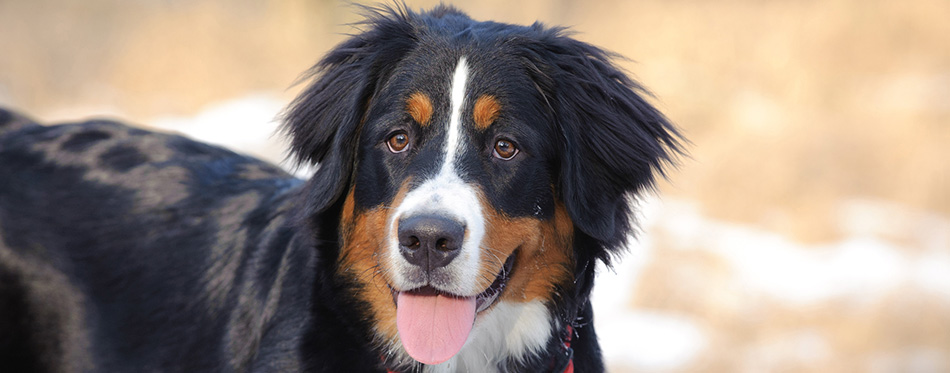We often shrug off runny nose as nothing more than a very common symptom of colds. But if it is your dog that is already showing this sign, it usually is an indication of a number of health issues that may need some expert determination so the appropriate treatment can be implemented. So what can cause runny nose in our beloved hounds?
Allergies
By far the most common reason why your four-legged pal may have runny nose is allergies. This is especially true if the discharge or fluid coming out of your dog’s nostrils is colorless or clear. This is often due to an increase in the permeability of blood vessels as well as an increase in mucus production in an effort to remove or ‘wash away’ the offending allergen. However, for an allergy to be suspected, the runny nose should also coincide with other allergy symptoms such as itching, sneezing, coughing, nosebleeds, and even breathing problems.
Identifying the allergen and actively preventing your dog from getting exposed to such an allergen can be helpful. However, if this cannot be avoided, then your vet can give your dog a drug that can help control the excessive production of mucus secretions. Usually, your vet may prescribe antihistamines, steroids, immunosuppressants, or biological.
Infection
If the fluid running out of your dog’s nose is rather thick and cloudy or with a yellowish or greenish tinge or can be foul smelling, there’s a good chance you’re looking at a bacterial or fungal infection. Most viral infections will typically produce clear, odorless secretions just like in allergies.
Bacterial infections can be managed with appropriate antibiotics that usually run a few weeks. If the cause is fungi, antibiotics may not work. This will require more powerful antifungal drugs that require longer administration. If it’s viral infection, your dog may only be given supportive care as this type of infection usually has a lifespan.
Related Post: Dog Vitamins

Presence of Foreign Object
If your dog also has nosebleeds, sneezing, and incessant pawing of its nose in addition to nasal discharge, there’s a good chance your dog has a foreign object lodge inside its nasal cavity. The only way you can be sure, of course, is to shine a penlight through its nose to help in visualization. You may see a blade of grass or even a seed stuck inside your dog’s nostril.
If you can remove the foreign object yourself, do so using tweezers. Do it carefully as the tweezers might also injure the delicate tissues of the nasal passages. This can lead to bleeding. If you’re not confident about removing the foreign object or if it is lodged deeper into your dog’s nasal cavity, you’d better bring your pet to the clinic. Your dog may have to be sedated to avoid causing discomfort and stress. Afterwards, antibiotics may be given to help prevent possible infection.
Tumors and/or Polyps
If the runny nose in your dog is accompanied by noisy breathing, a reduction in your dog’s appetite, and a visible bulge on one of its nose, there’s a good chance your pet may have nasal polyps or even nasal tumor. Nasal polyps are oversized glands that produce mucus. It is also possible that the nasal discharge comes with either pus or blood.
Dogs with nasal polyps typically undergo surgery to remove the overgrowth. However, additional treatments are often required since nasal polyps have the tendency to grow back. If the main issue is the presence of nasal tumors, surgical removal is also needed. Unfortunately, if the vet deems that the tumor is cancerous or has the potential to become one, radiation therapy is generally recommended. Regrettably, dogs with cancerous nasal tumors often have a very poor prognosis.

Canine Distemper
If the nasal discharge happens to be yellowish and a bit sticky while your dog is also showing convulsions, twitching, and even signs of pneumonia, you’re looking at canine distemper. This is a kind of viral infection that primarily affects the dog’s respiratory, central nervous, and gastrointestinal systems. In addition to the thick mucus secretions from the nose, you may also see lethargy or weakness, loss of appetite, depression, sudden diarrhea and vomiting, or high body temperature.
Understand that distemper is more common among puppies and juvenile dogs especially those that have never been vaccinated. Even puppies born to mothers that have never been vaccinated are also susceptible to canine distemper. The treatment is usually symptomatic as viruses typically ‘die out’ inside the body. Antibiotics are given to help prevent secondary bacterial infections because of the lowered immune system functioning inherent in distemper. The administration of IV fluids is also crucial. Sedatives, anticonvulsants, and analgesics may also be ordered.
Problems with the Nostrils
There are some dogs that may have issues with the anatomy of their nose. These can include dogs that have floppy, extra-soft nasal cartilage and canines that are classified as brachycephalic or flat-faced breeds. In addition to the nasal discharge, these dogs are also prone to noisy breathing. The unusual structure of the nose exposes the various mucus-producing cells to the air traversing the nasal passages. This stimulates the continuous production of nasal secretions which can be interpreted as runny nose.
Dogs with such nasal anatomical problems only have surgery to look forward to. For dogs with issues in their nasal cartilage, surgery is typically delayed until they reach adulthood.
Related Post: CBD Oils for Dogs

Nasal Fistula or Cleft Palate
If you observe the runny nose to be present in your dog only after your pet eats, it is possible that your dog has a nasal fistula or a cleft palate. In a nasal fistula there is a hole between the roof of the dog’s mouth and the floor of its nasal cavity. This is often brought about by infection, trauma, tooth decay, or even surgery. In cleft palate, the two sides of the roof of the dog’s mouth don’t fuse such that there is an opening into the nasal cavity above.
For both conditions, surgery is required.
Runny nose in dogs can be caused by a simple allergy or the presence of a foreign body inside its nose. Or it could also be a more serious concern like distemper and cancer. To be sure you’d better bring your pet to the vet.
Source:
- Runny Nose in Dogs – PetMD

